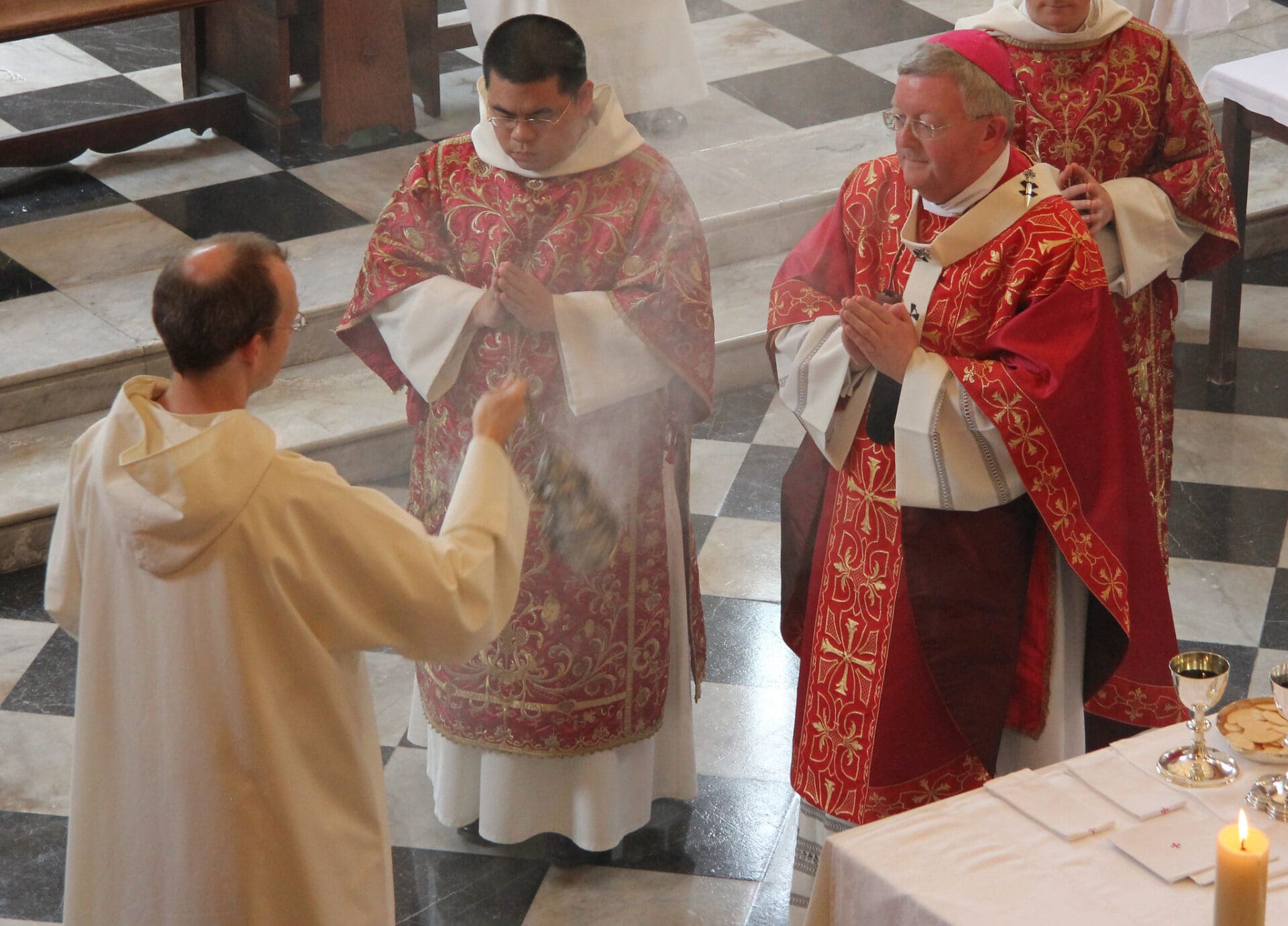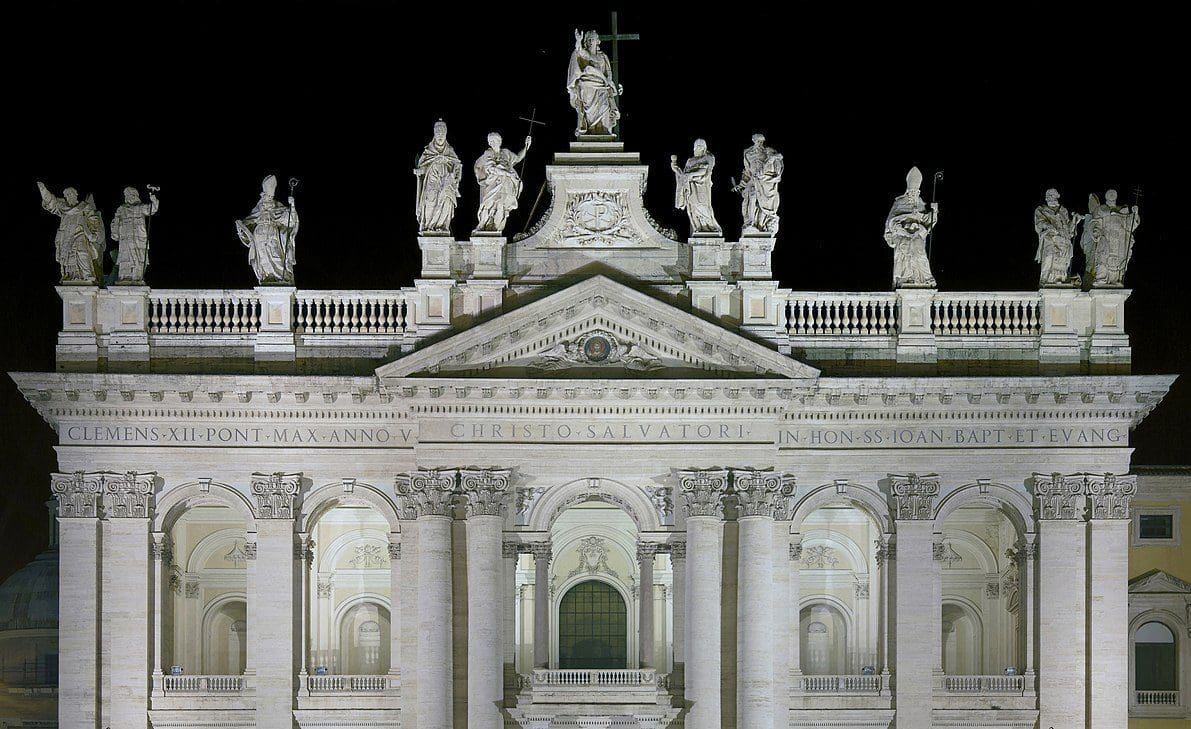2019 will mark 50 years of the Missal of Paul VI, introduced in part on the First Sunday of Advent, November 30, 1969 (at least in Italy). Since that time, we have witnessed both difficulties and positive results (as Pope John Paul II himself said in 1988).
One of the most significant elements of the new Mass has been the introduction of the vernacular. Relatively new in 1969, vernacular liturgy has since then lived a tumultuous childhood, and its future is not entirely clear. As the practical application of Pope Francis’ motu proprio, Magnum Principium, continues to be worked out, and as current liturgical books continue to be translated (e.g., Order of Christian Initiation of Adults and Liturgy of the Hours), Adoremus begins a new series on the principles of liturgical translation.
This first entry traces the introduction of the Missal of Paul VI over the past 50-plus years, along with its vernacular use. In future entries, we’ll reflect on lessons learned over these decades, and how these lessons might steer the translation process moving forward.
At the celebration of Mass, Roman Rite Catholics pray with words as old as the Church herself; some words even predate her establishment by Christ. Through the centuries these texts have been gathered at first in small collections, later in Sacramentaries, and now in a book called the Missal.
The year 1962 saw the last version of the “Tridentine” Missal, that collection of texts published at the wish of the Council of Trent. Today this last of the preconciliar editions is more properly named the 1962 Roman Missal, the “extraordinary form of the Roman Rite,” or the Missal of John XXIII.
Like the Council of Trent, the Second Vatican Council sought revisions in the rite of the Mass. Reformed during the papacy of Paul VI, this Missal is called the Novus ordo (that is, “new order” of Mass, in comparison with the more ancient order reformed according to Trent), the “ordinary form of the Roman Rite” or the Missal of Paul VI.
The Roman Missal that we presently use in English is the third edition since the Second Vatican Council or, said differently, the third edition of the Missal of Paul VI. But between the Council and today—more than 50 years—an intricate and substantial history intervenes. Taking a brief glance at the English-language of the various Roman Missals demonstrates not only the complexity of introducing the vernacular into the Mass, but also reveals the effort exercised in its introduction.
1963: The Constitution on the Sacred Liturgy (Sacrosanctum Concilium) was promulgated on December 4, 1963. About the introduction of the vernacular into the Mass, this document says: “In Masses which are celebrated with the people, a suitable place may be allotted to their mother tongue. This is to apply in the first place to the readings and ‘the common prayer,’ but also, as local conditions may warrant, to those parts which pertain to the people…. Nevertheless steps should be taken so that the faithful may also be able to say or to sing together in Latin those parts of the Ordinary of the Mass which pertain to them” (n.54).
1964: This directive led in 1964 to a Missal—a version of the 1962 Missal—with people’s parts in English. Here the Prayers at the Foot of the altar are maintained (with the Confiteor said by the priest and repeated by the ministers), and there is the single Roman Canon still said in Latin. The “Lord, have mercy” is the first text said in English (yet each invocation is said three times, for a total of nine invocations), and the Gloria and the Creed are also in English.
1966: Containing all texts except the readings, the 1966 Sacramentary allowed all texts in the vernacular except for the Prayers at the Offertory, the Roman Canon, and the private prayers of the priest (e.g., before reading the gospel).
1968: Two years after the Sacramentary, the entire Mass could be said in English. Still, this Sacramentary is an adaptation of the 1962 Roman Missal and not yet that to be promulgated by Paul VI.
1970: Although announced in 1969, it wasn’t until 1970 that the first edition of the Novus Ordo Roman Missal appeared in book form, and still only in Latin. (Pope Paul VI spoke during his November 26, 1969, Wednesday Audience about the new Missal and its vernacular to be used on the next weekend, at least in Italy.) Also introduced in 1970 were the three additional Eucharistic Prayers for the 1966 Sacramentary.
1974: Eleven years after the Council and four years after the first edition of the Missal of Paul VI, the complete and approved English-language version appeared.
1975-1985: The year after the English-language Missal was promulgated, the Holy See produced the second edition in Latin in 1975. The English version of the second edition followed ten years later, in 1985.
2000-2011: It was Pope John Paul II who, in 2000, announced the third edition of the Roman Missal. After a decade of translating, we began using this edition at the end of 2011.
Vernacular liturgy was, in most respects, a new experience for the Roman Church in 1963. For over 50 years the Church has developed her translation principles through experiment, mature understanding, and pastoral practice. The English-language Roman Missal that we are using is the fruit of these labors.


